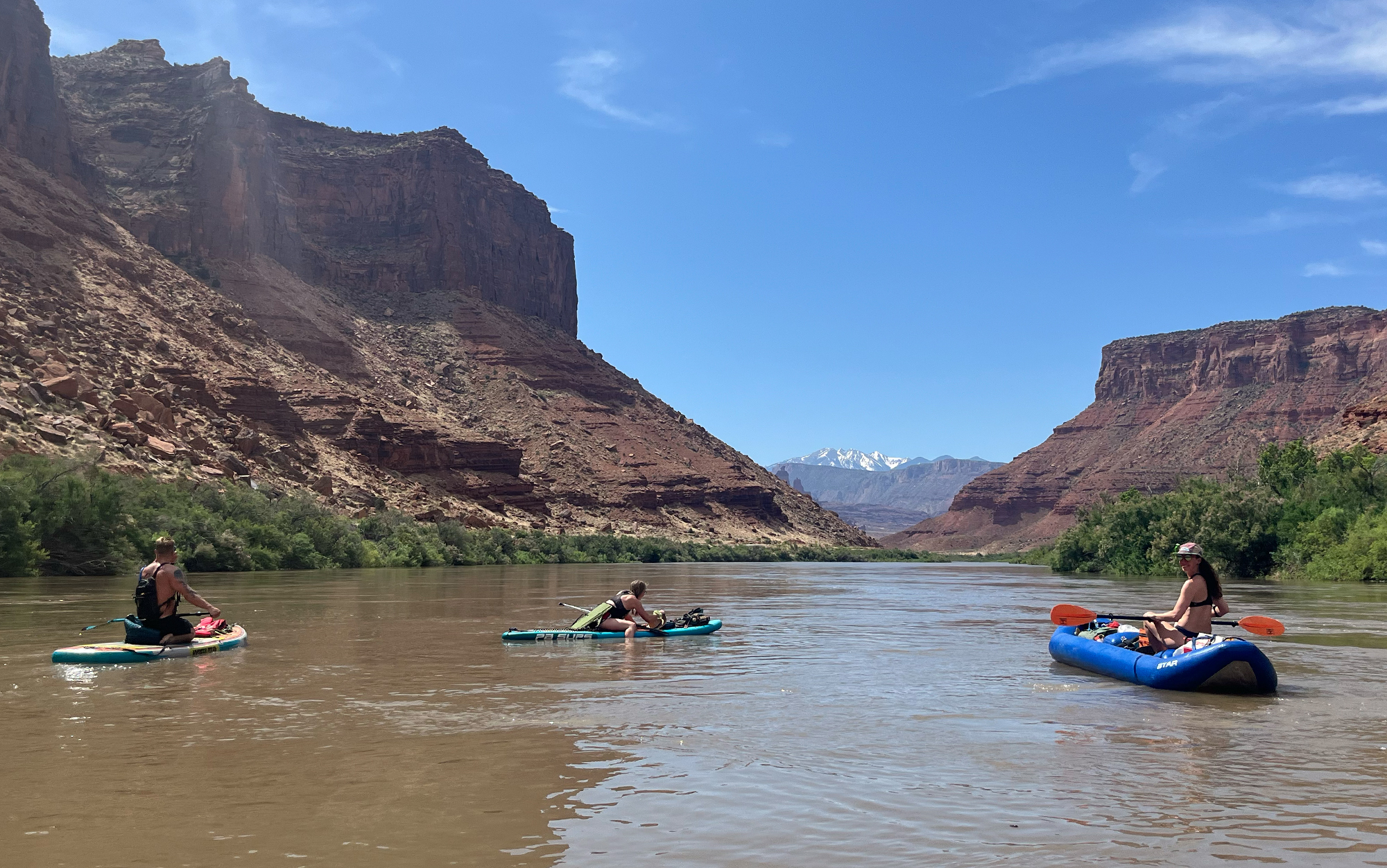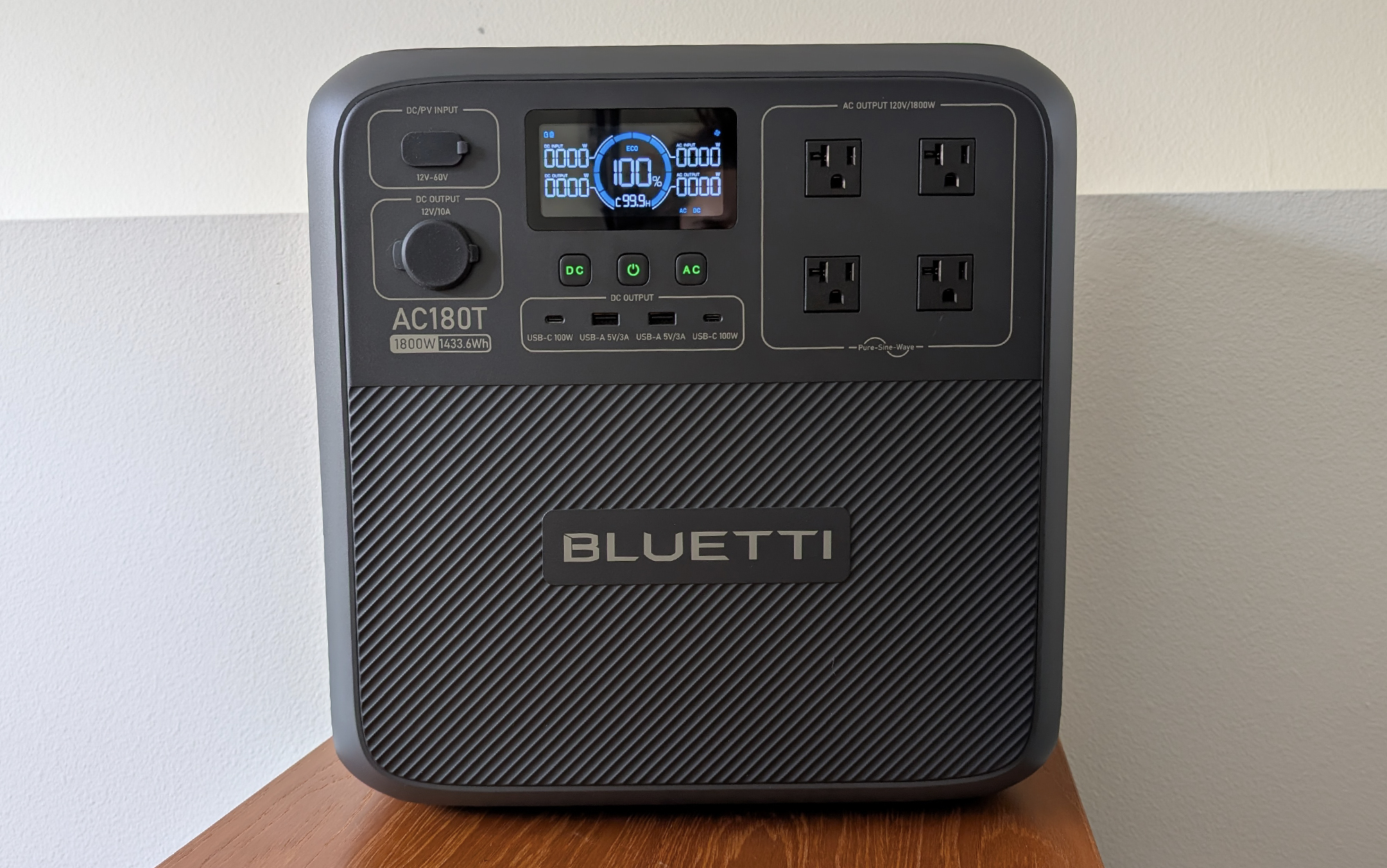Best Bass Fishing Rods, Tested and Reviewed
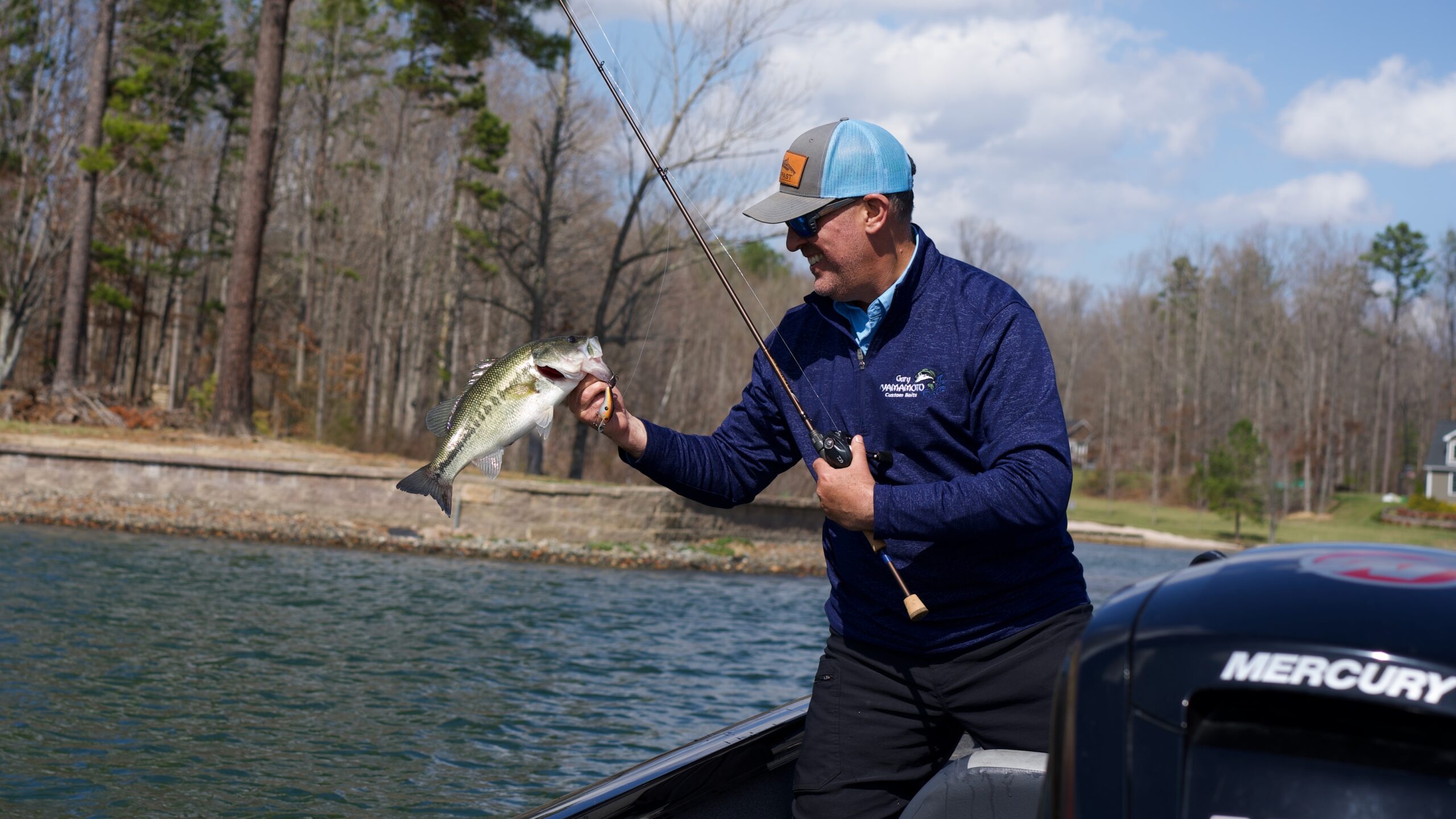
We may earn revenue from the products available on this page and participate in affiliate programs. Learn More ›
Determining the best bass fishing rod for a particular purpose is a personalized endeavor. An angler’s physical stature, line choice, and fishing environment are all factors to consider when choosing a rod. Budget also comes into play, and the simple fact that one rod costs more doesn’t mean it’s better suited to the task. Nevertheless, rods have multiple failure points, from guides to handles to the way they’re wrapped, and just because something looks good on the shelf doesn’t mean it’ll perform when the fish of a lifetime strikes.
Furthermore, even the most bespoke sticks won’t function as intended if you use them for the wrong techniques. A flipping stick must be lightweight but powerful, while a deep cranking rod must flex when a fish inhales the lure or when it surges at the boatside. Neither of those rods excel at presenting a finesse lure on light line. Anglers don’t necessarily need dozens of rods to be effective, but they need a reasonable assortment.
I tested a wide range of the best bass fishing rods over the past year from my home in Virginia to the tackle-busters of Mexico and up to smallmouth country in the upper Midwest. Here are some standouts from someone who takes tackle seriously but is often unreasonably rough on it.
Testing the Best Rods for Bass Fishing
While I fish hard and I’m rough on my equipment, I’m not necessarily the pickiest angler from the start. For example, I might not be able to discern the difference between a 7-foot 2-inch rod and a 7-foot 3-inch rod in the same basic action at the store. I need to get out on the water, and sometimes I learn more by losing fish than I do by catching them. I start to break things down when I realize that the rod failed me or that it didn’t pair up properly with my chosen reel or line.
For example, a flipping stick might not have the heft to get a bass out of a thick clump of hydrilla, and a cranking stick might not give at exactly the right moment. Or perhaps you could have skipped a Senko a few feet deeper into a boat slip if the rod handle had been a few inches longer. Once I start eliminating rods from the queue, my failures seem to drop. The “last man standing” becomes a trusted partner.
Best Rods for Bass Fishing: Reviews & Recommendations
Best Overall: G. Loomis IMX Pro 844C
See It
Pros
- Super lightweight
- Ergonomic, comfortable cork grips
- Time-tested design
Key Features
-
7 feet -
¼ to 1-ounce lures -
Full-grip cork handles -
11 guides plus tip
G.Loomis was one of the first premium, mission-driven brands in the rod world, and the IMX Series has long been their workhorse. They haven’t made major changes over the years because they haven’t had to, but the subtle iterations keep it at the forefront of quality and versatility. While this rod is rated as “heavy,” I have no trouble flicking a weightless Senko with it. It also excels with Carolina Rigs and light jigs, but what really makes it versatile is that it’s a solid performer with moving baits like Chatterbaits and squarebills, too. Is it perfect for those lures in all circumstances and for all anglers? Possibly not, but if you’re ready for your first premium stick and you want it to cover a lot of bases, this should be your choice.
Best Finesse: Dobyns Xtasy 723
Best Finesse Bass Rod
Dobyns Xtasy 723
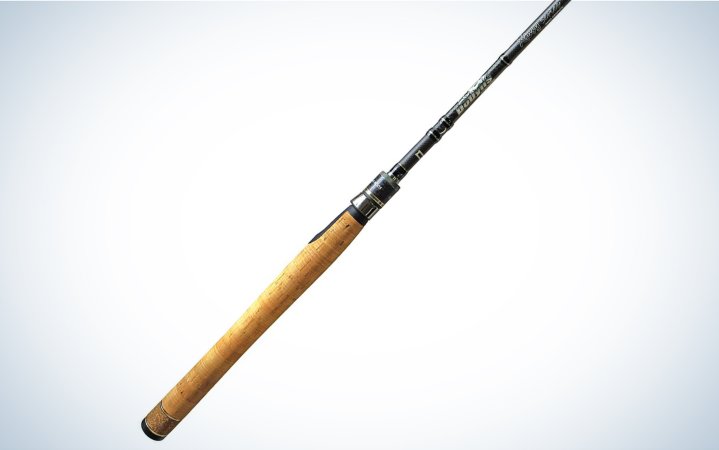
See It
Pros
- Super-crisp action
- Premium components throughout
- Kevlar wrapping makes them extra-strong
Cons
- Possible to get two or three quality rods for this price
Key Features
-
7 feet 2 inches -
3/16 to 5/8-ounce lures -
Full-grip cork handles -
Nine guides plus tip
Many fully “Bubbafied” anglers skimp on their spinning rods, saving the big bucks for tools dedicated to power techniques. That’s a mistake because increasingly pressured fish necessitate growing reliance on finesse techniques. Furthermore, thanks to the rise of better braids and fluorocarbons, you can do more with a spinning rod than ever before. However, there’s less room for error because they involve light line and stealth. Get a merely “good” finesse rod, and you’ll be covered—until you hook the fish of a lifetime in a precarious position. This rod is not only a joy to fish with, but it covers up for your mistakes and allows for increased sensitivity. That’s why legendary pro Larry Nixon relies on it after multiple surgeries—it gives him more feel and power. He convinced me to try it, and from flicking a Senko under docks to dropshotting timber to hover strolling for smallmouths, it has made me a better angler.
If you’re looking for a dropshot-specific rod, check out our test of the best drop shot rods for more options.
Best Budget Finesse: Abu Garcia Jordan Lee Spinning Rod 7′ Medium
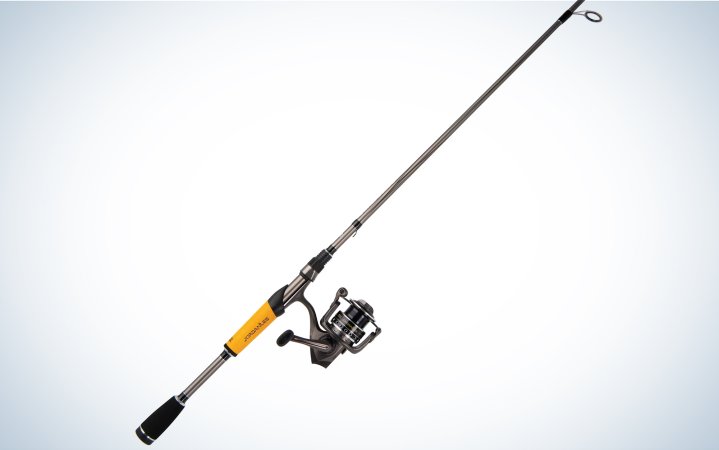
See It
Pros
- Good all-around length for multiple presentations
- 24-ton graphite blanks are remarkably sensitive
- Guide train system allows for long casts
Cons
- Some anglers don’t like Winn Grips
Key Features
-
7 feet -
3/16 to 5/8-ounce lures -
Winn Grip split grip handle -
Eight guides plus tip
Not only did Jordan Lee win two Bassmaster Classics before his 30th birthday, but he did so using a full range of techniques. He’s emblematic of the young pros who may be budget-strapped but aren’t afraid to pull out all the tricks. This rod reflects that versatility, and if you’re not sure whether you’ll be dropshotting, Neko Rigging, or throwing a light crankbait like a Shad Rap, it should be your first call. I found that it performs like much more expensive rods, and I reach for it much more often than expected. Anglers who want to go even lighter on the finesse scale can opt for the similar 6’10” medium-light “Super Finesse.” At this sub-$100 price point, it’s not unreasonable to buy both.
Best Flipping Stick: Fitzgerald Titan HD
Best Flipping Stick
Fitzgerald Titan HD
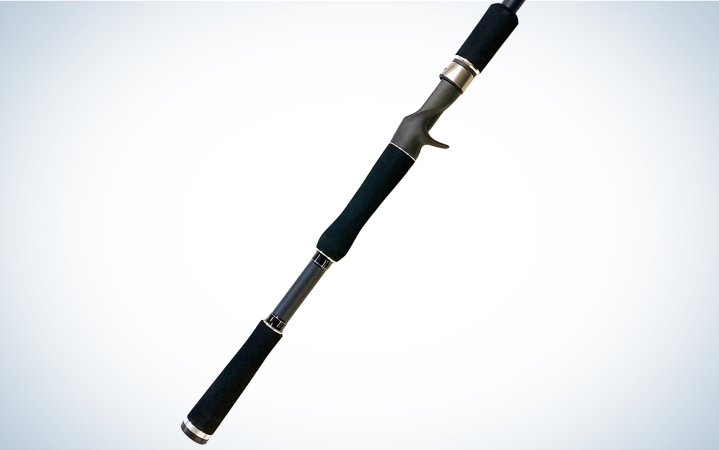
See It
Pros
- Lightweight for such beefy rods
- Balanced design further diminishes fatigue
- Guides made to excel with braid
Cons
- Not made for flipping light weights
Key Features
-
Lengths:
7 feet 6 inches, 8 inches, or 10 inches -
Made to flip weights up to 3 ounces -
Split-grip EVA handles -
10 guides plus tip
Fitzgerald Rods hails from Florida, where the vegetation grows thick, and the bass are big. Anglers who want to flip matts have to be prepared to battle both. What many novice flippers don’t realize, however, is that if you choose the wrong rod you’ll battle that, too. An imbalanced flipping stick can lead to fatigue at the end of a day of slinging big weights. Worse yet, it could result in injury. In other words, not any broomstick will suffice.
The reason why the Titan HD is one of the best bass fishing rods is that these rods won’t wear you out, but they’ll also stand up to close-quarters abuse. They have locking wraps to ensure that the guides won’t pull out. Indeed, the guides themselves are designed to prevent wind loops. I love probing the deepest possible cover with creature baits, feeding them to unpressured fish, and this rod made me seek out that option even more.
Need some jigs to go with your new flipping stick? Check out our review of the best jigs, which includes several great options for flipping.
Best Deep Cranking: iRod Genesis III Crank Launcher
Best Deep Cranking Rod
iRod Genesis III Crank Launcher
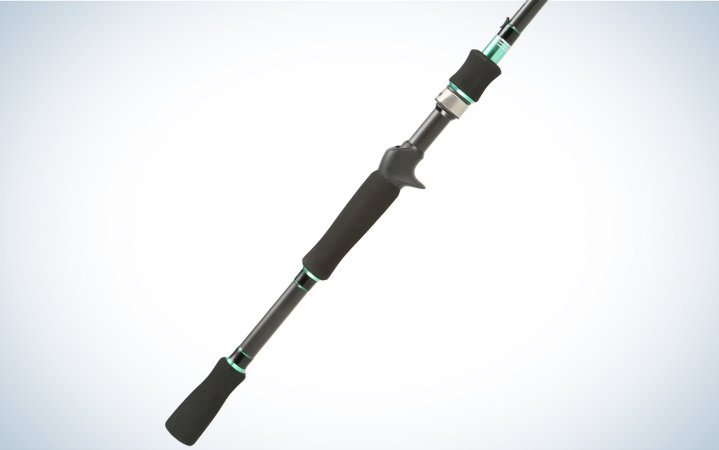
See It
Pros
- Perfect action for hookups at a distance and surging fish at boatside
- Removable handle for easy transport
- 7-foot, 11-inch length allows for extra-long casts
Cons
- Length not ideal for tight spaces
Key Features
-
7 feet 11 inches -
3/8 to 1 ½-ounce lures -
Split-grip EVA handle -
Nine guides plus tip
My frequent trips to Lake El Salto, Mexico, led me to this rod—actually, it led my wife to it. She needed a rod that could throw big cranks like Strike King 6XDs and 10XDs all day without wearing her out, and we didn’t want to spend $300 or more. Luckily we were able to buy this awesome rod for half that max budget. With all else being equal, I felt that she was casting longer distances and losing fewer fish than I was with my more expensive rod. Eventually, that convinced me to get one of my own, and now I find myself always reaching for it. In fact, I like them so much that I got two of them. The handle is exactly the right length and girth for comfort, and somehow the blank flexes at exactly the right point for maximum effectiveness from cast to landing. This would be a bargain at a substantially higher price.
Best Forward-Facing Sonar Rod: Shimano Intenza A Spinning Rods
Best Forward-Facing Sonar Rod
Shimano Intenza A Spinning Rods

See It
Pros
- Perfect action for long and accurate casts with light lures
- Extra fast tip allows you to add subtle action to your FFS lures
- Sensitive but also has a strong backbone for sweeping hooksets
Cons
- Some anglers may want a lighter action for super light hover strolling tactics
Key Features
-
7 feet 0 inches -
3/16 to 5/8 ounce lures -
Titanium oxide guides -
Eight guides plus tip
The rise of forward-facing sonar has brought for a lot of new rods for anglers to try. While I’ve been putting plenty through the paces, the Shimano Intenza A has quickly become my favorite FFS rod. The medium action with extra fast tip is perfect for strolling and hover strolling techniques with lightweight jig heads. While some anglers may opt for a lighter action when throwing super lightweight jig heads, I typically won’t fish anything lighter than 3/16 ounces, so this rod fits my needs perfectly. As for the length of the rod, at 7 feet, you can really launch your lightweight lure out there to 80 or 90 feet while maintaining accuracy to hit your mark. Whether you’re learning how to fish with FFS, or simply looking to upgrade your FFS rod, you won’t be disappointed with the Intenza A.
Best Lipless Crankbait Rod: Shimano Curado Glass Crankbait Casting Rods
Best Lipless Crankbait Rod
Shimano Curado Glass Crankbait Casting Rods
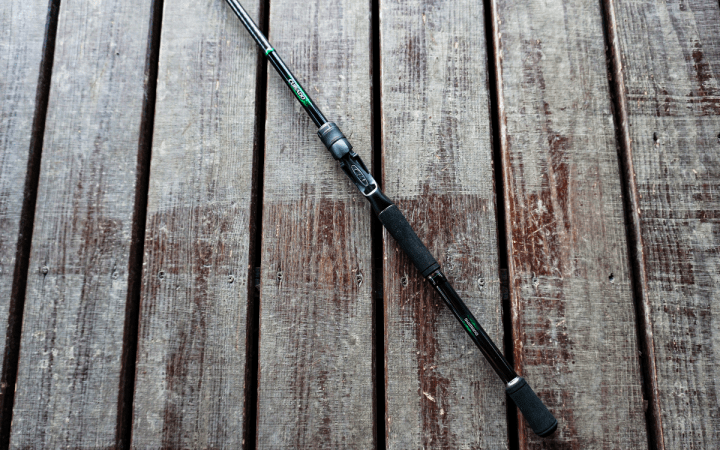
See It
Pros
- Perfect action for ripping lipless crankbaits out of emergent grass
- 7’4″ length allows you to make long casts while covering water
- Glass rod offers plenty of sensitivity to feel the difference between grass and a bite
Cons
- Length not ideal for tight spacing
Key Features
-
7 feet 4 inches -
3/8 to 1 ounce lures -
Fuji tangle-free K guides -
Eight guides plus tip
Lipless crankbaits are one of the most effective ways to cover water during the pre-spawn when fishing around emergent grass. As bass hunker down in the grass waiting for baitfish to swim by, a lipless crankbait ripping through the grass triggers some amazing reaction strikes. The Shimano Curado Glass Crankbait rod offers a great length for long casts and with a medium-heavy moderate taper, keeps the grass off of your crankbait as your rip it through and bass on your line after the hookset. The sensitivity of the glass rod also helps you know when to set the hook or to simply rip the bait out of the grass. I’ve spent a lot of time fishing a lipless crankbait, and this rod is by far the best option I’ve found.
Best Jerkbait Rod: 13 Fishing Envy Black III Casting Rods
Best Jerkbait Rod
13 Fishing Envy Black III Casting Rods

See It
Pros
- Perfect action for getting jerkbaits to dart back and forth subtly
- 7’4″ length allows you to cast jerkbaits incredibly far
- Sensitive without being “too fast”
Cons
- Fairly expensive
- Some anglers may prefer a shorter rod
Key Features
-
7 feet 4 inches -
1/4 to 3/4 ounce lures -
Hand selected Portuguese 5A split grip handle -
Eleven guides plus tip
Whether you’re fishing a jerkbait during the pre-spawn or throughout the fall, having the right rod for the job can make a massive difference. You want to be able to subtly add action to your jerkbait with subtle twitches, without yanking the bait too far with each jerk. Perfecting this subtle action takes a lot of practice, but having the right rod will make things much easier and get you more bites throughout the day. At 7 feet 4 inches, the 13 Fishing Envy Black III allows you to make long casts across points or along bluff walls, keeping your bait in the strike zone longer each cast. The moderate action has enough give to add action to your jerkbait without pulling it away from interested bass, and with a sweeping hookset, you’ll drive the treble hooks home and be able to keep more fish hooked up throughout the duration of the fight back to the boat.
Best Chatterbait Rod: Daiwa Tatula XT Glass Casting Rods
Best Chatterbait Rod
Daiwa Tatula XT Glass Crankbait Casting Rods
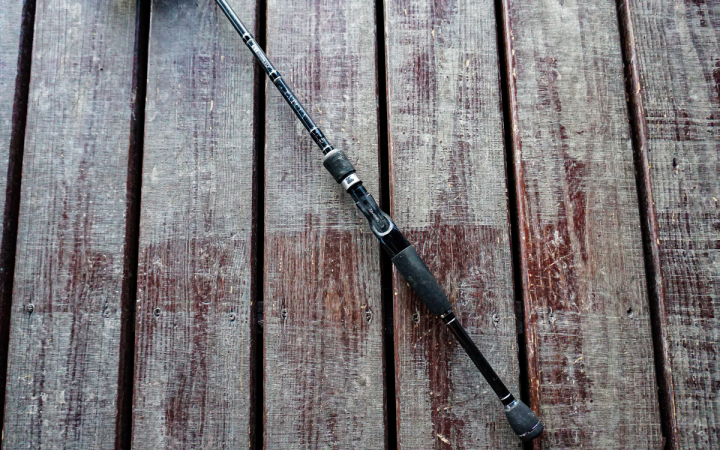
See It
Pros
- Perfect action to feel the thump of a chatterbait and even the most subtle bites
- 7-foot length covers everything from close quarters to long distance casting
- Lightweight yet strong guides and reel seats
Cons
- Understand the difference between composite and graphite blanks before buying
Key Features
-
7 feet 0 inches -
1/4 to 1 ounce lures -
JDM EVA Style Split Grips -
Eight guides plus tip
When selecting a chatterbait rod, I typically lean for something with much more give than a standard jig rod. However, I don’t typically reach for a medium-action rod to find this give, because I want the rod to retain it’s strong backbone for the hookset to drive those thicker hooks home. For me, the glass rod, or graphite rod depending on who you talk to, allows me to still fish a medium-heavy rod while maintaining the ability to feel the subtle thump of a chatterbait coming through the water. The more moderate feel of a medium-heavy glass rod comes through perfectly with the Daiwa Tatula XT Glass rod. In a pinch, you can also use it for medium-diving crankbaits, making this a no-brainer to add to your arsensal.
Best Spinnerbait: Douglas LRS C715F
Best Spinnerbait Rod
Douglas LRS C715F

See It
Pros
- Enough length for long casts, yet comfortable in tight quarters
- Sensitive without being “too fast”
- Corrosion-proof Fuji Fazlite guides
Cons
- Some anglers may prefer a longer rod
Key Features
-
7 feet 1 inch -
Lure Weight:
3/16 to 3/4 ounce lures -
Power:
Medium heavy -
Action:
Fast -
Line Weight:
12 to 20 pound -
Split grip EVA handle
The blue blank of the Douglas spinnerbait rod stands out among a field of cookie cutters, but it’s the action and versatility that really sets it apart. Lure ratings on a handle are often generous, but this rod excelled at all ranges of the spectrum—from the smallest finesse spinnerbaits up to hard-thumping giants that’ll rattle your fillings out. It’s a wonderful blend of sensitivity and give with a perfectly-sized handle and premium components from tip to butt.
While testing this rod I flicked a 3/16 ounce finesse model around boat slips in the morning, and then used it in the afternoon to slow roll a spinnerbait that weighed 3/4 ounce, and in both cases I felt like I had the perfect rod. Everyone that I’ve let fish the Douglas LRS liked the rod’s perfectly sized handle, and appreciated the premium components. The Douglas LRS is my pick for the best bass fishing rod for spinnerbaits because of its ability to throw everything from finesse to deep working spinnerbaits and it doesn’t sacrifice feel for versatility—it’s a rare rod that fishes everything well.
Looking for more spinnerbait rod options? Read our full review of the best spinnerbait rods.
Best Budget for Worms and Jigs: Falcon Lowrider LFC 7-MH
Best Budget Rod for Worms and Jigs
Falcon Lowrider LFC 7-MH
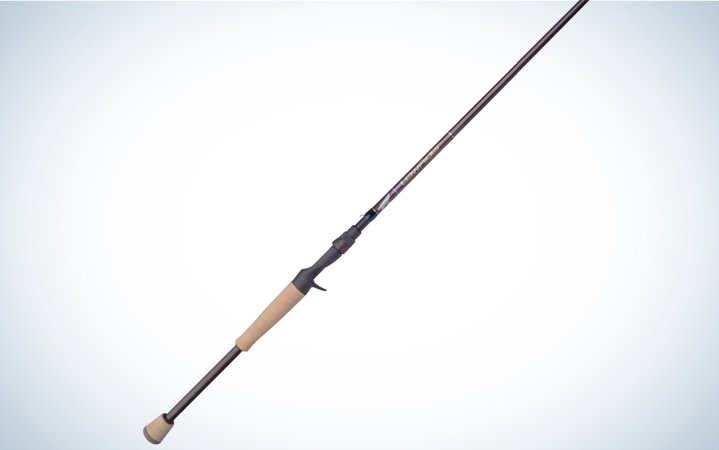
See It
Pros
- Very reasonable price
- Fuji Tangle-Free K Frame Guides
- Super-sensitive
Cons
- Anglers who prefer EVA handles might not like this rod
Key Features
-
7 feet -
Power:
Medium heavy -
Action:
Moderate Fast -
Lure Weight:
¼ to 3/4 ounce -
Split grip cork handle with no foregrip
Falcon started making the Lowrider series of rods nearly three decades ago, and while they’ve engineered consistent refinements, they’ve never given up on the purpose-driven ethos that guides their products. This rod is super-sensitive, and even if you generally don’t like cork handles, this premium cork may change your mind. I found myself reaching for it whether I was casting a jig, pitching a creature bait into laydowns, or skipping a weightless Senko under docks. It’s extremely sensitive and perfectly balanced, so you won’t get carpal tunnel from the repetitive motion, and you’ll be ready, willing, and able to fish a couple of extra hours each day. The Lowriders are also available in models with solid grip handles.
The Three Rods Every Bass Angler Needs
No matter how long you have been a bass angler or your experience level, it can be daunting to know which rods are best for catching largemouth and smallies. The aisles at your local bait shop are likely littered with all kinds of options. And very few rod-makers actually detail what their rods are intended for.
Many pro anglers carry 20 to 25 rods on the decks of their boats, but most of those guys and gals are sponsored, so they can pick from a variety of options that don’t cost them a thing. You don’t have that luxury.
But you can get away with having fewer rods and still have the ability to fish a variety of techniques. Here are the three rods to keep in your arsenal. They will allow you be more flexible and catch fish in more locations.
The 70 MHF Rod is Your Bread and Butter
Arguably the most versatile rod in existence is the 70 MHF spinning rod. The 7-foot medium-heavy, fast rod is manageable, and its action allows anglers to cast a variety of baits accurately in both close quarters and at longer distances.
It is most commonly used as a standard jig and worm rod but can also be used for moving baits such as the spinner bait and chatter bait. Weightless plastics, shaky, and wobble head jigs can also be added to the list, as well as topwaters such as buzz baits or larger prop baits.
Lastly, though not ideal in all situations, anglers can also use this rod as a frog rod. If an angler is consistently fishing for big fish around heavy cover or slop, it would be advised to consider a longer, heavier rod like a 7-foot 6-inch heavy or extra-heavy rod.
Throw Bigger Baits with a 70 MMF Rod
The 70 MMF (7-foot medium action, moderate fast) has a lighter power and slower action so it will enable anglers to throw treble hook baits like crankbaits and jerk baits, along with other moving baits, because the rod will absorb the shock better to help keep those fish pinned.
This rod also shines with spinnerbaits and chatterbaits around wooden structure or open water when you don’t necessarily need the power to get them out of heavy cover.
It will handle small single-hook swimbaits, small spoons, blade baits, and topwater baits with treble hooks, such as poppers or walking baits.
Finesse Fish with the 70 MXF Rod
Lastly, having a 70 MXF (7-foot medium, extra fast) spinning rod is going to round out your arsenal. The extra fast action is going to give you unparalleled sensitivity, which is especially important with finesse fishing. You’re also going to be able to throw lighter baits further, especially into the wind.
Anglers can experiment with weightless plastics, light Texas rigs and shaky heads, finesse jigs, Ned rigs, drop shots, small tubes, and small topwaters.
Keep in mind, not all rod manufactures powers and actions are the same, but these rod models will serve as a basic guideline to help you purchase the right one. If you have these three rods, you’ll be covered for a majority of the locations and the techniques you need to catch bass.
-Kristine Fischer
How to Choose The Best Rod for Bass Fishing
Overall Length
A generation or two ago, most bass rods were under 6 feet 6 inches. That’s changed substantially, and now only a fraction of the rods in my arsenal are under 7 feet long, and some are as long as 8. Keep in mind that you’re choosing the right rod for you, and your mileage may vary depending on your height, strength, and where you fish, so while longer may be better for casting distance and hook setting, there’s usually a happy medium.
Action
With single hooked lures, you’ll typically want a fast rod for driving the hook home. With treble hooked lures look for something more moderate with a deeper bend that will help keep fish hooked. But there’s a wide range of gradation in between, and the choice of mono, fluorocarbon, or braid makes a big difference in how much forgiveness you’ll want or need.
Power
You’ll want to match your rod power to all of the following variables:
- Size of the fish
- Heavy cover or open water
- Lure weight
A bigger fish, heavier cover, and heavier lure all require a rod with a heavier power. Also be sure to note that not all “mediums” or “medium heavies” test out the same. It pays to handle the rod and if possible make a few casts before committing your hard-earned dollars.
Price
There are a remarkable number of quality rods that retail below a hundred bucks today, but in some cases you do get what you pay for. Within a given manufacturer’s lineup, you may find differences in the quality of components—everything from blanks to reel seats to guides—based on your willingness to pay. Sometimes it’s worth the extra dollars, other times it’s just a matter of window dressing.
FAQs
Spinning rods are excellent for casting light lures and finesse applications like dropshotting. Baitcasting rods excel at accurate, long casts, and power for fighting fish.
Match the bass fishing rod to the type of lure and technique you plan to use. For example: A rod made for throwing ned rigs, isn’t going to be great for flipping 1-ounce jigs. A stiff rod made for driving hooksets on a Texas-rigged worm, won’t be great for fishing a squarebill crankbait.
A medium-heavy, 7-foot to 7-foot 3-inch rod is a versatile rod that you can use in a variety of fishing scenarios and for a variety of techniques.
Final Thoughts on Best Rods for Bass Fishing
Again, choosing a rod—whether you have two or two dozen—is a very personal decision. Ultimately, however, it boils down to two basic questions: How can I get more bites? And how can I lose fewer fish? Be sure to examine every component to ensure that good looks in the store don’t hide a lack of durability or sensitivity. I’ve often been surprised that rods I didn’t prefer at first ended up being my best bass fishing rods.
Read the full article here







